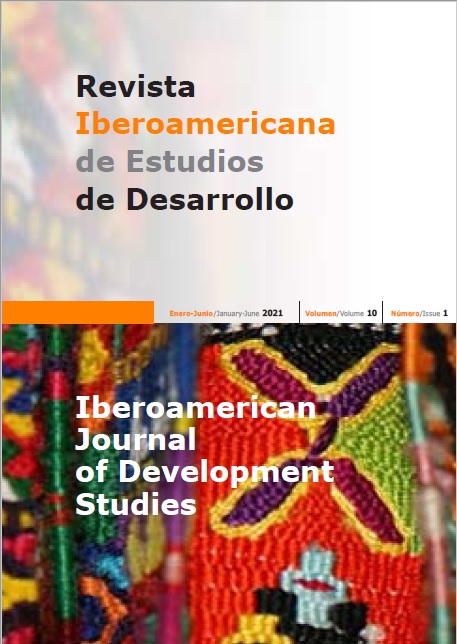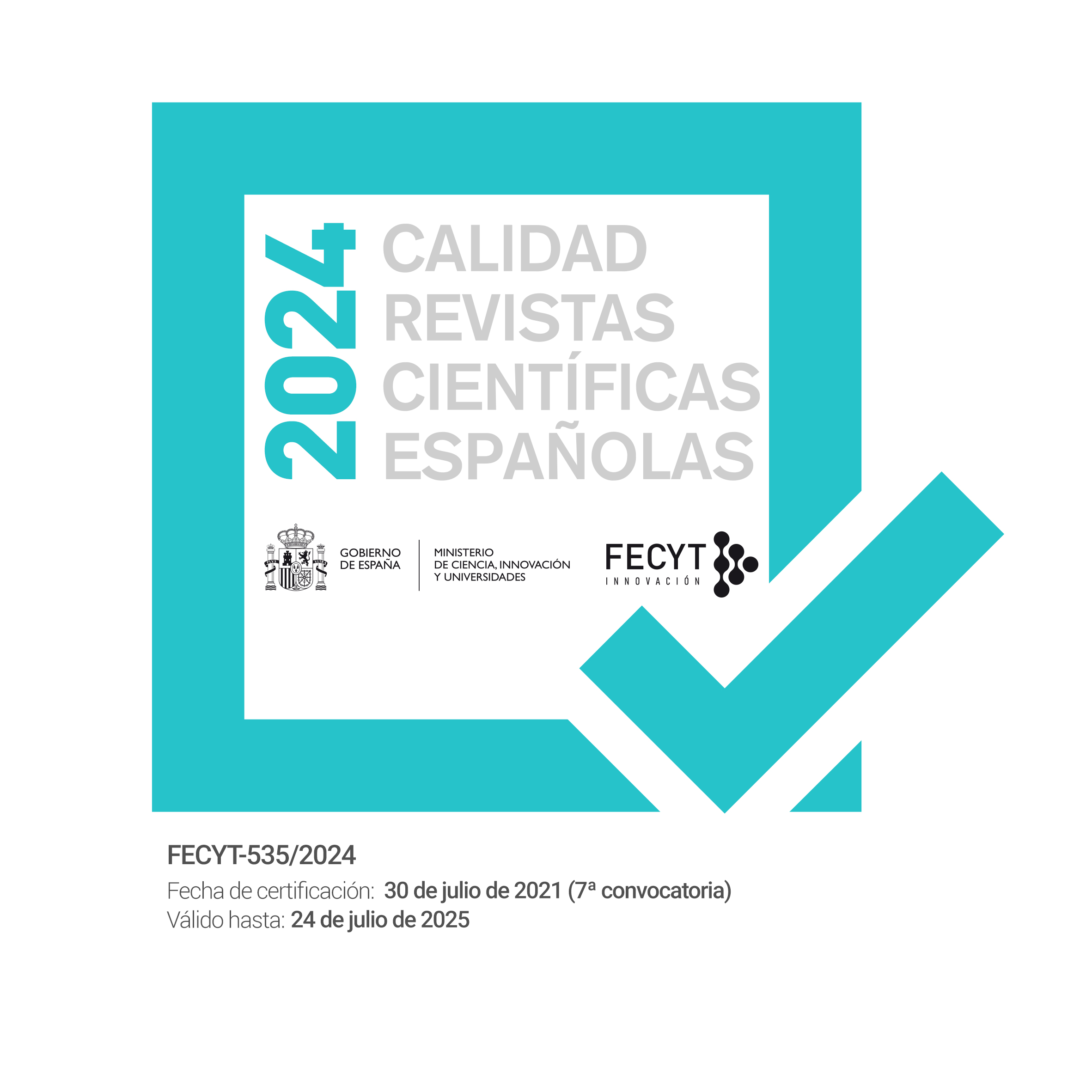América Latina y el Caribe en el Siglo Asiático: un análisis comparativo de las relaciones de Japón y China con sus socios latinoamericanos desde la perspectiva del Derecho Internacional Económico
DOI:
https://doi.org/10.26754/ojs_ried/ijds.498Palabras clave:
Siglo Asiático, Asia-Latinoamérica, Japón, China, Derecho Internacional Económico, Iniciativa del Cinturón y Ruta de la Seda, Fórum China-CelacResumen
El llamado Siglo Asiático comenzará en 2020, cuando Asia producirá más de la mitad de la riqueza
global. Latinoamérica y el Caribe parecen no estar preparados adecuadamente para navegar
sobre esta nueva realidad. El objetivo de este ensayo es contribuir a un mejor entendimiento del rol
de Asia como promotor de desarrollo económico en América Latina y el Caribe, a través del análisis
comparativo de los modelos utilizados por Japón y China para promover sus relaciones económicas
en la región. El estudio se realiza dentro del marco analítico del Derecho Internacional Económico.
El argumento principal embozado por este trabajo es que Japón ha utilizado instrumentos formales
o hard law para construir sus relaciones con Latinoamérica y el Caribe, mientras que China ha ideado
una plataforma ecléctica, en la que se combinan las herramientas tradicionales empleadas por
sus vecinos japoneses y mecanismos alternativos o soft law, que le permite crear una relación más
directa con los países de la región, evitando la interferencia de otras potencias globales.
Descargas
Referencias
ABBOT K, KEOHANE R, MORAVCSIK A, SLAUGHTER A, SNIDAL D (2000). The Concept of Legalization 54(3) International Organization: 401-419.
ABE S (2014). Juntos Bringing Infinitive Depth to Japan–Latin America and the Caribbean Cooperation. https://japan.kantei.go.jp/96_abe/statement/201408/140802seisaku_en.html , acceso 14 de octubre de 2019.
AVENDAÑO R, MELGUIZO A, MINER S (2017). Chinese FDI in Latin America: New Trends with Global Implications. Atlantic Council’s Adrienne Arsht Latin America Center and the OECD Development Centre, Washington.
BANCO CENTRAL DO BRASIL (2018). Foreign Direct Investment in Brazil Report 2018. Banco Central Do Brasil.
BARRIOS R (2018). China’s Belt and Road Lands in Latin America. China Dialogue (online). https://www.chinadialogue.net/article/show/single/en/10728-China-s-Belt-and-Road-lands-in-Latin-America , acceso 11 de julio de 2018.
BID (2017) Informe Anual 2016.
BID (2018). Informe Anual 2017.
BID (2019). Informe Anual 2018.
BORETTO M (2012). Soft Law: Nuevos Enfoques para el Desarrollo Progresivo del Derecho Internacional de la Propiedad Intelectual. Ars Boni et Aequi 8(2):81-144.
CAF/OECD/ECLAC (2015). Latin American Economic Outlook 2016: Towards a New Partnership with China. OECD Publishing, París.
CHEN Y (2018). Statement by the Alternate Governor for China. IDB Annual Meeting of the Boards of Governors, Mendoza, Argentina, 24 de marzo de 2018.
CHINA-CELAC FORUM (2015). China-Latin American Cooperation Countries Plan (2015-2019). http://www.chinacelacforum.org/eng/zywj_3/t1230944.htm , acceso 15 de octubre de 2019.
COHEN L (2018). Corrected-RPT-US., China Rivalry Poses Risks, Benefits for Latin America, Reuters, 5 de abril de 2018. https://www.reuters.com/article/usa-trade-china-latin-america/corrected-rpt-u-s-china-rivalry-poses-risks-benefits-for-latin-america-idUSL2N1RH2ED , acceso 14 de octubre de 2019.
DEVLIN R, KAHN T (2016). Latin American Trade with India and China: The Region Needs a «Business Plan». En: Roett R, Paz G (eds.). Latin America and the Asian Giants. Brookings Institution, Washington, pp. 133-181.
DREHER A, FUCHS A, PARKS B, STRANGE A, TIERNEY M (2017). Aid, China and Growth: Evidence from New Global Development Finance Dataset. AidData, Working Paper 46.
ECLAC (2013). Chinese Foreign Direct Investment in Latin America and the Caribbean. ECLAC Working Document, Santiago.
ECLAC (2018). Exploring New Forms of Cooperation between China and Latin America and the Caribbean. ECLAC, Santiago.
EL ECONOMISTA (2013). Japón descarta entrar en Alianza del Pacífico. El Economista (online). https://www.eleconomista.com.mx/economia/Japon-descarta-entrar-en-Alianza-del-Pacífico-20130522-0174.html , acceso 14 de octubre de 2019.
FEALAC (2019). Overview. http://www.fealac.org/new/about/overview.jsp , acceso 14 de octubre de 2019.
FENG Z, HUANG J (2014). China’s Strategic Partnership Diplomacy: Engaging with a Changing World. European Strategic Partnerships Observatory, Working Paper 8.
GALLAGHER K (2016). The China Triangle. Oxford University Press, Nueva York.
GALLAGHER K, MYERS M (2019). China-Latin America Finance Database. Inter-American Dialogue, Washington.
GALLAGHER K, IRWIN A, KOLESKI K (2012). The New Banks in Town: Chinese Finance in Latin America. The Inter-American Dialogue, Washington.
GAZIZ O (2018). Pence says China is Engaged in «Unprecedented Effort» to Influence Americans. CBS News (online). https://www.cbsnews.com/news/pence-set-to-accuse-china-of-interfering-in-u-s-policies-politics-in-speech/: , acceso 14 de octubre de 2019.
GRISANTI A, LALAGUNA G (2018). El Arte de la Deuda: China, Mas del Default que de Nuevo Endeudamiento. Prodavinci (online). https://prodavinci.com/el-arte-de-la-deuda-china-mas-cerca-del-default-que-de-nuevo-financiamiento/ , 14 de octubre de 2019.
GU J, CHEN Y, HAIBIN W (2016). China on the Move: The «New Silk Road» to International Development Cooperation? En: Gu J, Shankland A and Chenoy A (eds.). The BRICS in International Development. Palgrave Macmillan, Londres, pp. 119-138.
HIRATSUKA D, ISONO I, SATO H (2011). Japan. En: Kawai M, Wignaraja G (eds.). Asia’s Free Trade Agreements: How is Business Responding? Edward Elgar, Cheltenham and Northampton, pp. 77-105.
HORISAKA K (2005). Japan and Latin America – Missing Strategies and Political Will. En: Jörg Faust J, Mols M, Kim W (eds.). Latin America and East Asia – Attempts at Diversifications: New Patters of Power, Interest and Cooperation. Lit Verlag Münster, Seúl, pp. 147-161.
HOSONO A (2017). Asia-Pacific and Latin America: Dynamics of Regional Integration and International Cooperation. ECLAC, International Trade Series No.132, Santiago.
IDB (2013). Japan and Latin America and the Caribbean: Building a Sustainable Trans-Pacific Relationship. IDB, Washington.
JIABAO W (2004). Vigorously Promoting Comprehensive Strategic Partnership between China and the European Union. Speech delivered at the China-EU Investment and Trade Forum, Brussels. http://www.chinamission.be/eng/zt/t101949.htm , acceso 14 de octubre de 2019.
KAHN T (2016). A Virtuous Cycle of Integration: The Past, Present and Future of Japan-Latin America and the Caribbean Relations. IDB, Washington.
KATO H (2016). Japan’s ODA 1954-2014: Changes and Continuities in a Central Instrument in Japan’s Foreign Policy. En: Kato H, Page J, Shimomura Y (eds.). Japan’s Development Assistance: Foreign Aid and the Post – 2015 Agenda. Palgrave Macmillan, Londres, pp. 1-18.
KENNEDY D (2013). Law and the Political Economy of the World. Leiden Journal of International Law 26:7-58.
KUWAYAMA M (2015). Japan-Latin America Relations: Then and Now. Mundo Asia Pacífico 4(7):6-42.
MINISTRY OF FOREIGN AFFAIRS OF JAPAN (2015). Japan’s Official Development Assistance Charter. https://www.mofa.go.jp/files/000067701.pdf , acceso 14 de octubre de 2019.
MINISTRY OF FOREIGN AFFAIR OF THE PEOPLE’S REPUBLIC OF CHINA (2016a). Basic Information about China-CELAC Forum. http://www.chinacelacforum.org/eng/ltjj_1/P020161207421177845816.pdf , acceso 14 de octubre de 2019.
MINISTRY OF FOREIGN AFFAIR OF THE PEOPLE’S REPUBLIC OF CHINA (2016b). China’s Policy Paper on Latin America and the Caribbean. https://www.fmprc.gov.cn/mfa_eng/zxxx_662805/t1418254.shtml , acceso 14 de octubre de 2019.
MIYACHI T (2017). Japan and the Asia-Latin American Connection in the Twenty First Century. Congreso de Asociación Latinoamericana de Ciencias Políticas, Montevideo, Uruguay, 26-28 de julio de 2017.
NAKAMAE T (2018). Indo-Pacific-LAC: The Role of Japan-LAC in the Indo Pacific Era. Speech delivered at the Japan’s Latest Moves in LAC ‒ Reshaping the Partnership. The Dialogue, Washington, 11 de diciembre de 2018. https://www.youtube.com/watch?v=neZ3MQkpZpE&t=2808s , acceso 17 de octubre de 2019.
OAS (2019). Permanent Observers Profile. http://www.oas.org/en/ser/dia/perm_observers/countries.asp , acceso 14 de octubre de 2019.
OEDC (2019). What is ODA? OEDC, 29 de abril de 2019. https://www.oecd.org/dac/stats/What-is-ODA.pdf , acceso 14 de octubre de 2019.
PÁRRAGA M (2011). Venezuela Oil Sector Gets $ 1.5 bln Loan from Japan. Reuters (online), 29 de junio de 2011. https://www.reuters.com/article/venezuela-japan-oil-idUSN1E75R19420110628 , acceso 14 de octubre de 2019.
PAZ G (2016). Introduction: Assessing Latin America’s Relations with the Asian Giants. En: Roet R, Paz G (eds.). Latin America and the Asian Giants/Evolving Ties with China and India. Brookings Institution, Washington, 1-18.
PRESIDENT OF THE UNITED STATES (2017). National Security Strategy. The White House, Washington. https://www.whitehouse.gov/wp-content/uploads/2017/12/NSS-Final-12-18-2017-0905.pdf , acceso 14 de octubre de 2019.
PWC (2017). The Long View: How Will the Global Economic Order Change by 2050? PwC. https://www.pwc.com/gx/en/world-2050/assets/pwc-world-in-2050-summary-report-feb-2017.pdf , acceso 14 de octubre de 2019.
RAUSTIALA K (2005). Form and Substance in International Agreements 99(3). American Journal of International Law, pp. 581-614.
ROMEI V, REED J (2019). The Asian Century is set to Begin, The Financial Times. https://www.ft.com/content/520cb6f6-2958-11e9-a5ab-ff8ef2b976c7 , acceso 14 de octubre de 2019.
SHAMBAUGH D (2013). China Goes Global. Oxford University Press, Nueva York.
SHIMOMURA Y (2016). The Political Economy of Japan’s Aid Policy Trajectory: with Particular Reference to the Changes and Continuity under the ODA Charter. En: Kato H, Page J, Shimomura Y (eds.). Japan’s Development Assistance: Foreign Aid and the Post – 2015 Agenda. Palgrave Macmillan, Londres, pp. 72-87.
SHIXUE J (2008). The Chinese Foreign Policy Perspective. En: Roett R, Paz G (eds.). China’s Expansion into the Western Hemisphere. Brooking Institution, Washington, pp. 27-43.
THE ECONOMIST (2018). The Blossom and the Passion Flower, Taiwan’s Long Relationship with Paraguay Continues to Pay Off. The Economist (online). https://www.economist.com/the-americas/2018/07/19/taiwans-long-relationship-with-paraguay-continues-to-pay-off , acceso 14 de octubre de 2019.
THE STATE COUNCIL OF THE PEOPLE’S REPUBLIC OF CHINA (2011). China’s Foreign Aid (White Paper). The State Council of the Popular Republic of China.
THE STATE COUNCIL OF THE POPULAR REPUBLIC OF CHINA (2014). China’s Foreign Aid. The State Council of the Popular Republic of China.
UNECOSOC (2013). South-South Cooperation: Issues and Emerging Challenges. Conference of Southern Providers of Development Cooperation. https://www.un.org/ecosoc/en/events/2013/conference-southern-providers-development-cooperation-south-south-cooperation-issues-and , acceso 14 de octubre de 2019.
XIANG L (2016). China Goes Geopolitical in its Strategic Partnership with Latin America. En: Roett R, Paz G, Latin America and the Asian Giants. The Brookings Institution, Washington, pp. 64-68.
YAMAOKA K (2015). Japan’s Relations with Latin America and the Caribbean. En: Dominguez J, Covarrubias A (eds.). Routledge Handbook of Latin America in the World. Routledge, Nueva York, pp. 235-246.
ZHANG Q (2015). China’s Relations with Developing Countries: Patters, Principles, Characteristics, and Futures Challenges. En: Freeman C (ed.). The Handbook on China and Developing Countries, Edward Elgar, Cheltenham y Northampton, pp. 51-70.
Descargas
Publicado
Número
Sección
Licencia
Derechos de autor 2021 Gabriel García

Esta obra está bajo una licencia internacional Creative Commons Atribución-NoComercial-SinDerivadas 4.0.






